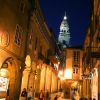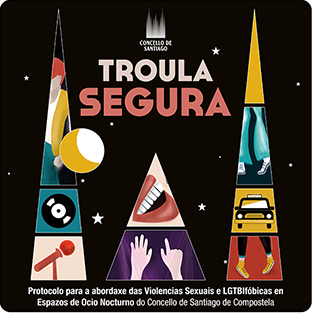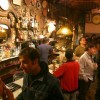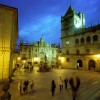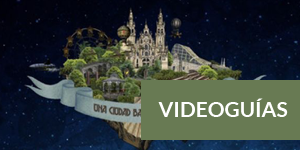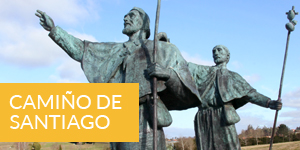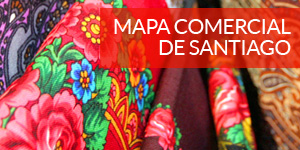- Accede I
- Regístrate I
- carrito
Las zonas de la noche
En la noche de Santiago se distinguían hasta hace poco dos zonas: la vieja y la nueva. Esta diferenciación no sólo aludía a la localización, sino también al tipo de ambiente, de música y de clientela de cada una –más ‘folk’ en la zona histórica y más ‘moderna’ en la parte nueva-, y a los horarios de cierre –más tempraneros en el casco monumental-. Hoy estas connotaciones han perdido sentido porque la noche de la parte vieja es ahora más diversa y sus horarios de cierre más dilatados. Por eso, aunque se sigue hablando de dos zonas, se refieren ya únicamente a la situación en la ciudad.
Las rúas de la zona histórica se llenan durante la noche. En casi todas podemos encontrar un pub, un bar, una cafetería. Así que precisar calles es difícil, y en parte innecesario, porque son estas son fáciles de intuir, y el tránsito de los que vienen y van guía el rumbo a través de las callejas y plazas de la zona monumental.
Los vinos, las tapas y las raciones son especialidad de toda la zona vieja, aunque la mayor concentración de estos establecimientos está en las rúas Franco y Raíña, Troia, y en la rúa de San Pedro y alrededores -Porta do Camiño, rúa Travesa, plaza de Santo Agostiño, San Roque, etc.-.
En verano, para el café y las primeras copas la rúa de San Paio de Antealtares, llena de terrazas, es una buena opción si optamos por los lugares concurridos. Más tranquilas son las de la Quintana, las de las rúas principales –Vilar y Nova- y las de Rodrigo de Padrón. Y hay también terrazas en jardines interiores, escondidos en lugares deliciosos.
A partir de ahí, en el eje que va desde la Rúa Nova -pasando por Xelmírez, Conga, Acibechería, Troia y San Martiño Pinario- hasta Casas Reais -incluyendo las calles de los alrededores: plaza de San Miguel y las dos Algalias, rúa Travesa, Entremuros y la zona del Mercado de Abastos- y que se prolonga por la Virxe da Cerca, encontramos pubs con públicos, músicas y ambientes distintos. En alguno de ellos preparan, previa petición, la típica y espectacular ‘queimada’.
Aunque cada pub de la ciudad antigua tiene su propia decoración y personalidad, hay características comunes a todos ellos: el pequeño formato, condicionado por las limitaciones espaciales y el respeto a la distribución originaria de los edificios históricos, y la presencia ineludible en los muros del material más característico de Compostela, el granito -en el que muchos dejan monedas que expresan deseos de volver-, que suele combinarse con madera en suelos, techos y mobiliario.
En la zona nueva o Ensanche -nombre con el que se conoce al barrio construido entre 1950 y los años ochenta- los vinos, las cervezas y las tapas se localizan en unas cuantas calles muy próximas entre sí: Carreira do Conde, Montero Ríos, Alfredo Brañas y República de El Salvador, y más al sur, alrededor de la plaza Roxa, Santiago del Estero, calle Nova de Abaixo y Santiago de Chile.
Aquí el concepto de pub es otro: los espacios son más amplios, la decoración varía más de unos locales a otros, y es, en general, más efectista, más ilusionista. Esta zona se llena de estudiantes durante el curso. Las principales calles son, en este caso, Alfredo Brañas, República Argentina de principio a fin, Santiago de Chile y Fernando III O Santo.









